Related Research Articles
Milton Clark Avery was an American modern painter. Born in Altmar, New York, he moved to Connecticut in 1898 and later to New York City. He was the husband of artist Sally Michel Avery and the father of artist March Avery.

The Hudson River School was a mid-19th century American art movement embodied by a group of landscape painters whose aesthetic vision was influenced by Romanticism. The paintings typically depict the Hudson River Valley and the surrounding area, including the Catskill, Adirondack, and White Mountains.

Asher Brown Durand was an American painter of the Hudson River School.
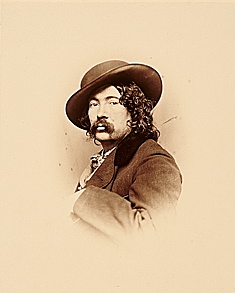
James McDougal Hart, was a Scottish-born American landscape and cattle painter of the Hudson River School.
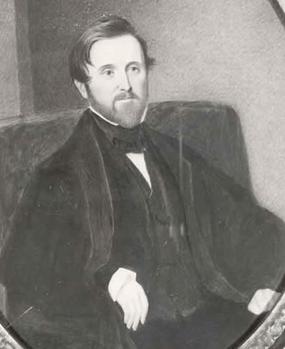
Alexander Jackson Davis, was an American architect, known particularly for his association with the Gothic Revival style.

Samuel Worcester Rowse was an American illustrator, lithographer, and painter. He was most famous for his drawings of Ralph Waldo Emerson and Henry David Thoreau. Rowse is also well known for his lithograph, The Resurrection of Henry Box Brown at Philadelphia.

The Avery Architectural and Fine Arts Library is a library located in Avery Hall on the Morningside Heights campus of Columbia University in the New York City. It is the largest architecture library in the world. Serving Columbia's Graduate School of Architecture, Planning and Preservation and the Department of Art History and Archaeology, Avery Library collects books and periodicals in architecture, historic preservation, art history, painting, sculpting, graphic arts, decorative arts, city planning, real estate, and archaeology, as well as archival materials primarily documenting 19th- and 20th-century American architects and architecture. The architectural, fine arts, Ware, and archival collections are non-circulating. The Avery-LC Collection, primarily newer print books, does circulate.
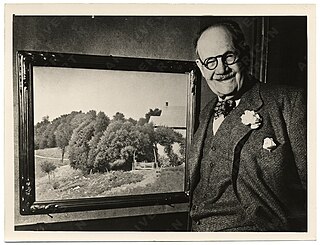
Frank Vincent DuMond was one of the most influential teacher-painters in 20th-century America. He was an illustrator and American Impressionist painter of portraits and landscapes, and a prominent teacher who instructed thousands of art students throughout a career spanning over fifty years.

William Guy Wall (1792–1864) was an American painter of Irish birth.
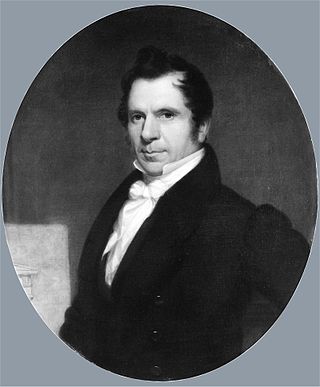
Martin Euclid Thompson (1786–1877) was an American architect and artist prolific in nineteenth-century New York City, and a co-founder of the National Academy of Design.

Francis Luis Mora was a Uruguayan-born American figural painter. Mora worked in watercolor, oils and tempera. He produced drawings in pen and ink, and graphite; and etchings and monotypes. He is known for his paintings and drawings depicting American life in the early 20th century; Spanish life and society; historical and allegorical subjects; with murals, easel painting and illustrations. He also was a popular art instructor.

John William Hill or often J.W. Hill was a British-born American artist working in watercolor, gouache, lithography, and engraving. Hill's work focused primarily upon natural subjects including landscapes, still lifes, and ornithological and zoological subjects. In the 1850s, influenced by John Ruskin and Hill's association with American followers of the Pre-Raphaelite Brotherhood, his attention turned from technical illustration toward still life and landscape.
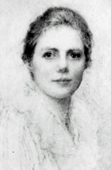
Lucia Fairchild Fuller was an American painter and member of the New Hampshire Cornish Art Colony. She was inspired to pursue art by John Singer Sargent. Fuller created a mural entitled TheWomen of Plymouth for the Woman's Building at the World's Columbian Exposition in Chicago in 1893. Best known for her portrait miniatures, she was a founding member and treasurer of the American Society of Miniature Painters.

Ann Hall (1792–1863) was an American painter and miniaturist.
Alexander Robertson (1772–1841) was a Scottish-American artist. In the 1790s he founded the Columbian Academy of Painting in New York with his brother Archibald Robertson.
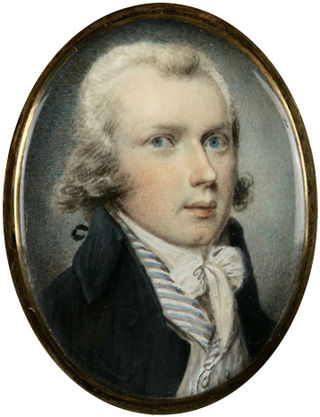
Archibald Robertson was a Scottish born painter who operated the Columbian Academy of Painting in New York with his brother Alexander. Known for his miniature portrait paintings, he was asked to paint George and Martha Washington soon after coming to the United States from Scotland. He also made watercolor landscape paintings and engravings. His book Elements of the Graphic Arts was published in 1802.
John Cranch was an American painter and print collector.

Lauretta Vinciarelli was an artist, architect, and professor of architecture at the collegiate level.

Charlotte Buell Coman was an American painter.
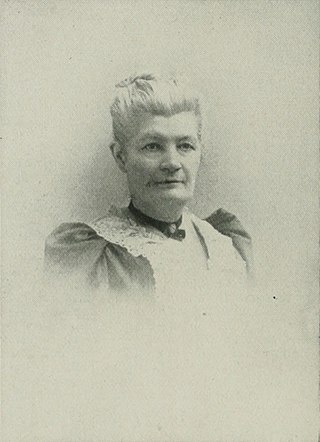
Emily Maria Scott was an American artist. The New York Watercolor Club, and the Pen and Brush Club were formed in her studio. She was also a writer of magazine articles. She served as president of the National Association of Women Painters and Sculptors, vice president New York Water Color Club, and was a member of the Pen and Brush Club, the American Water Color Society, the New York Women's Art Club, and the National Arts Club."
References
- ↑ Alexander Robertson (1772-1841). Archived August 22, 2014, at the Wayback Machine Art & Architecture of New Jersey. Retrieved August 21, 2014.
- ↑ William Beekman, by Alexander Robertson. Smithsonian Institution. Retrieved August 21, 2014.
- 1 2 3 William Dunlap (1834). History of the Rise and Progress of the Arts of Design in the United States. George P. Scott and Company, Printers. pp. 425–426.
- ↑ Sidney Lee (1896). Dictionary of National Biography. pp. 401–402.
- ↑ New York Public Library (1909). Hudson-Fulton exhibition: made by the New York Public Library (Lenox library building). September 1909. p. 43.
- 1 2 Kevin J. Avery; Metropolitan Museum of Art (New York, N.Y.) (1 January 2002). American Drawings and Watercolors in the Metropolitan Museum of Art. Metropolitan Museum of Art. p. 338. ISBN 978-1-58839-060-8.
- 1 2 Archibald Robertson (1765-1835). Art & Architecture of New Jersey. Retrieved August 21, 2014.
- 1 2 3 Kevin J. Avery; Metropolitan Museum of Art (New York, N.Y.) (1 January 2002). American Drawings and Watercolors in the Metropolitan Museum of Art. Metropolitan Museum of Art. p. 102. ISBN 978-1-58839-060-8.